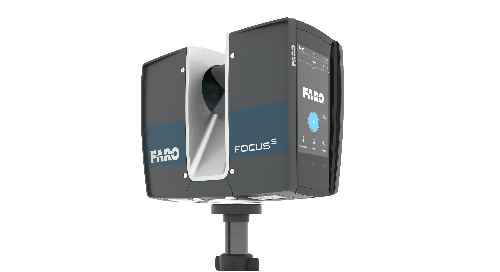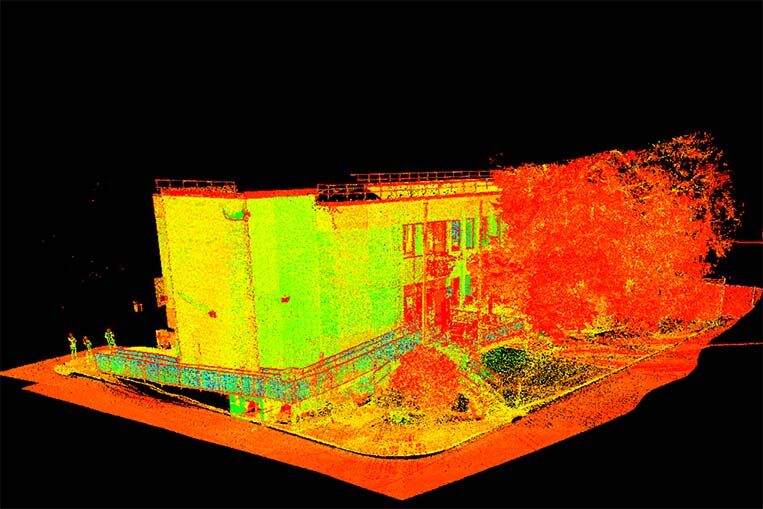How 3D Laser Scanning Revolutionizes Architectural Layout and Building And Construction Projects
3D laser scanning is changing the landscape of architectural style and building. This technology uses unmatched precision in capturing existing settings, which facilitates far better task planning and implementation. It lowers errors while enhancing performance in various stages of development. The implications for partnership among architects, designers, and various other stakeholders are significant. These innovations open up the door to brand-new layout opportunities and cutting-edge options. What lies in advance for this progressing innovation?
The Fundamentals of 3D Laser Scanning Modern Technology
Although 3D laser scanning modern technology might appear complex, its core principles are uncomplicated and transformative for building layout. This modern technology utilizes laser beam of lights to catch accurate measurements of physical structures, generating a detailed factor cloud that stands for the scanned setting. A laser scanner produces quick pulses of light, gauging the moment it takes for the light to return, which allows for the calculation of ranges with impressive precision.
The resulting point cloud can be converted into a 3D version, giving designers with very useful aesthetic data. This model makes it possible for experts to control and assess design aspects within their tasks, permitting for cutting-edge options and enhanced visualization. By using 3D laser scanning, designers can much better comprehend the existing problems of a site, guaranteeing that brand-new styles integrate with their surroundings. This integration of modern technology right into architectural style marks a substantial improvement, fostering creative thinking and precision in the area.

Enhancing Accuracy and Effectiveness in Architectural Projects
As building tasks significantly demand precision and speed, 3D laser scanning becomes a pivotal tool in enhancing both accuracy and efficiency. This technology captures millions of information factors in a quick duration, producing exact and detailed 3D models of existing frameworks. The capability to obtain precise measurements reduces the threat of mistakes throughout the style phase, allowing architects to envision their tasks with unparalleled quality.
The quick data collection process minimizes the time invested on-site, allowing groups to concentrate on analysis and layout enhancements. With real-time data availability, changes can be made quickly, promoting an extra streamlined operations. The combination of 3D laser scanning into building practices not just enhances dimension precision however also boosts the general project timeline, promoting quicker decision-making. In a sector where precision is crucial, this modern technology stands as a transformative force, boosting the requirements of architectural design and building and construction jobs.
Enhancing Collaboration Amongst Stakeholders
While conventional architectural processes frequently entail fragmented communication among stakeholders, 3D laser scanning cultivates a much more natural collective setting. By supplying specific, high-resolution data, this modern technology allows designers, clients, designers, and service providers to operate from a unified factor of reference. The detailed visualizations produced via laser scanning get rid of false impressions and uncertainties, ensuring that all parties have accessibility to the exact same info.
This openness boosts decision-making and urges timely responses, as stakeholders can easily imagine style components and spatial partnerships. In addition, the integration of 3D scanning data into Building Information Modeling (BIM) platforms even more improves partnership, enabling for real-time updates and adjustments. Such seamless interaction not only reduces problems yet additionally increases task timelines, as all stakeholders remain straightened throughout the design and building and construction stages. Inevitably, 3D laser scanning changes typical operations right into a much more effective and collective procedure, profiting all celebrations included.
Unlocking Creative Opportunities in Layout
By making it possible for engineers to visualize complex spatial connections and detailed details, 3D laser scanning exposes innovative possibilities in layout. This innovation enables precise mapping of existing settings, allowing architects to discover ingenious concepts that could have previously appeared unwise. With highly exact information, designers can experiment with unconventional kinds and products, pushing the borders of standard architecture.
The assimilation of 3D laser scanning right into the style procedure promotes cooperation amongst multidisciplinary teams, encouraging the exchange of concepts and enhancing creative thinking. The comprehensive visualizations produced by this innovation not just aid in determining potential style obstacles but likewise motivate services that may not have actually been thought about. As an outcome, architects can develop more appealing and vibrant areas that reverberate with users while satisfying useful needs. Ultimately, 3D laser scanning transforms the building landscape, encouraging developers to realize their visions with unprecedented precision and imagination.
The Future of 3D Laser Scanning in Architecture and Construction
The assimilation of 3D laser scanning into architectural design not only improves imagination yet additionally establishes the phase for its developing function in the future of architecture and building read and construction. As modern technology advances, the accuracy and efficiency of laser scanning will remain to enhance, making it possible for building contractors and engineers to develop extra complex designs with precision - 3D Scanning. Using this innovation in real-time information collection will certainly promote far better decision-making, decreasing errors and enhancing process
Future applications may include enhanced and online truth integrations, enabling stakeholders to envision tasks in immersive atmospheres. In addition, as sustainability becomes a top priority, 3D laser scanning will certainly support the development of energy-efficient layouts by giving in-depth insights into existing frameworks. As partnership among numerous self-controls becomes even more important, the ability to share specific 3D models will certainly promote advancement and improve project results. Inevitably, 3D laser scanning will redefine requirements in architectural style and building techniques.
Often Asked Questions
What Is the Price of Carrying Out 3D Laser Scanning Modern Technology?

For how long Does a Normal 3D Laser Scanning Job Take?
A regular 3D laser scanning task can take index anywhere from a few hours to a number of days, depending upon variables such as the task's dimension, intricacy, and the degree of information needed for precise data capture.
What Types of Projects Benefit Most From 3D Laser Scanning?
3D laser scanning benefits different tasks, specifically large building and constructions, historic reconstructions, and complex restorations. It improves precision in dimensions, decreases errors, and gives thorough data necessary for reliable preparation and execution in architectural design and construction.

Exist Certain Software Programs Required for 3D Laser Scans?
Yes, certain software application are essential for refining 3D laser scans. 3D Scanning. Popular options consist of Autodesk ReCap, Faro Scene, and Leica Cyclone, each offering one-of-a-kind features tailored for envisioning and analyzing checked information successfully in numerous tasks
Exactly How Does 3D Laser Scanning Influence Environmental Sustainability in Building And Construction?
3D laser scanning improves ecological sustainability in construction by reducing product waste, making it possible for specific measurements, and advertising reliable resource use. This modern technology enables for far better preparation, minimizing the ecological impact of building projects with improved precision and performance.
3D laser scanning is transforming the landscape of building style and construction. 3D laser scanning innovation might seem complicated, its core principles are transformative and straightforward for building layout. By allowing architects to envision complex spatial partnerships and complex information, 3D laser scanning reveals innovative possibilities in design. The combination of 3D laser scanning right into the design process fosters collaboration among multidisciplinary teams, motivating the exchange of concepts and improving creativity. The combination of 3D laser scanning into building design not just enhances creative thinking link yet likewise establishes the phase for its evolving role in the future of design and construction.